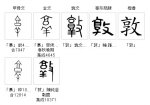Clarity,
Office 17622,
PO Box 6945,
London.
W1A 6US
United Kingdom
Phone/ Voicemail:
+44 (0)20 3287 3053 (UK)
+1 (561) 459-4758 (US).

A reporter in a 1985 profile in The Washington Post wrote that "there is something about this man.You believe him. His smile defuses skepticism. His Chinese slippers make no noises. . . .In a city founded on convention, Wu is a soothing reminder that there is another way."
Source: The Washington Post
Freeman Crouch : «Chameleon Book»

HEXAGRAM 33JUDGMENT
D’wen
Piglet
Fortune.The graph for the Hexagram Name contains a piglet. The movement of pigs, wild or domesticated, provided common Omens.
Sacrifice Received.
Profitable Augury In small matters.
As Waley comments, “the ‘lucky pig’ plays an important part in modern New Year observations in Teutonic countries (e.g., Bavaria and Austria), and doubtless elsewhere. The original text beyond doubt concerned Pig-Omens and Pig-Ritual, but has been mutilated beyond possibility of reconstruction. The movements of swine were closely observed by the Chinese. A herd of swine with white trotters crossing a stream is a portent of heavy rain.” This is to be seen in the Book of Songs:
Song 232 «We met swine
With white trotters, A herd of them, Plunging through waves.The Moon was caught In a Net.Deluges of rain.Soldiers fighting east, No time for rest0»
Waley comments on this song: “The Net, i.e., the Hyades, was connected by the Chinese, as by us, with rain... Rain falling looks like a net cast over the landscape. The characters for ‘net’ and ‘rain’ are in their oldest forms very similar.”
LINES
Six in First Place
Piglet’s Tail. Danger.
A destination derves no purpose.
Gao Heng mentions the modern practice of removing pigs’ tails to hasten the fattening process.
Six in Second Place
Tether it with thongs of brown oxhide.
No escape.
The same oxhide occurs in Hexagram 49/1.
Nine in Third Place
Piglet bound.
Pain. danger.
Auspicious for rearing slaves, men and women.
The piglet is trussed for Sacrifice.
Nine in Fourth Place
Fine Piglet.A gift such as this would be appropriate only for someone in a grand position. In Analects 17.1, Yang Huo, a powerful minister of the state of Lu, sent Confucius a piglet (the exact same word as this Hexagram Name), thereby embarrassing him greatly, because acceptance of such a generous gift trought with it certain social obligations. See Part I, Hexagram XXXVIII / 1.
Auspicious for a noble man, Trouble for a small man.
Line in Fifth Place
Piglet for celebration.
Auspicious augury.
A pig for Sacrifice at a Triumph, or possibly a gift for a wedding.
Nine in Top Place
Fat piglet.An excellent sacrificial victim or gift.
Profit in all things.
Source: John Minford's I Ching (Yi Jing), The Essential Translation of the Ancient Chinese Oracle and Book of Wisdom.
Available at Google Books:
Minford also speaks of PIGLET in his first, traditional, translation of H.44 «Encounter». See his commentary to 44.1:
Say, the piglet could be metaphoric meaning a promiscuous woman with many, maybe five, lovers or also a leader's own emotions... but that's another story.
All the best,
Charly
Hi Fai:Perhaps an English word analogous to this discussion is 'cow' - is it a noun or a verb?
We can have a long-drawn etymological discussion until the cows come home. Even when the cows are home, some would continue to beef about it
From the first edition of «I Ching» by Kerson and Rosemary Huang, 1987.A preview of a 2014 revised edition: «I Ching: The Oracle» by Kerson Huang is availabe at Google Books
Dear Diamanda:Amazing thread. There IS a pig, beyond any doubt.
I never thought that the day would come that I'd have to actually type this.

Thanks Fai:Many thanks Charly for the meticulous detail.
With all the food for thought about the pig, we'd think we should be getting some ham by now. Or should it be hamlet?
... Children enjoy like pigs. Little they know about order and discipline. Women sympathize with children and luckily they are fond of talking, if not children should be dumb.
... HOMES need not only BARRIERS but also OPENINGS. And DOORS have both functions, of course, for those that know how to behave with them. And that things are never simple.
Here what happens when a man is in charge of maintaining day to day order in a house...
Source: Giggle-Giggle-Quack in Simon and Schuster's page.
Link: http://www.simonandschuster.com/books/Giggle-Giggle-Quack/Doreen-Cronin/9781481465434
...
Clarity,
Office 17622,
PO Box 6945,
London.
W1A 6US
United Kingdom
Phone/ Voicemail:
+44 (0)20 3287 3053 (UK)
+1 (561) 459-4758 (US).